SITES
Under “sites” – or multimodal logistics hubs – we group together topics on sites with highly efficient rail and road connections and infrastructure for logistics functions. This also includes free loading, terminals or sidings with warehouse infrastructure.
For the first and last mile, we are concerned about a balanced distribution of power among the market powers, proper incentives and attention to appropriate safety regulations. The first and last mile in the rail freight system includes sidings, free loading facilities and terminals. None of these transhipment facilities should allow the abuse of market power and thus unnecessarily distort competition. The rail freight system needs free access to the first and last mile in particular. For example, it derives no benefit from a station converted for passenger traffic that can no longer be reconciled with its loading practice – but rather additional expense.
The VAP advocates for equal cubits in operating and safety regulations for freight and passenger transport. Standard increases in passenger transport can have a negative impact on freight transport. This is where the VAP intervenes.
Actors in the field of sites
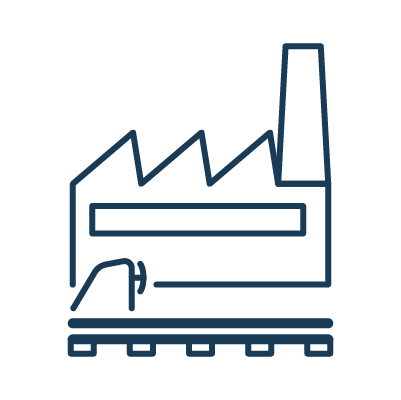
Siding owner
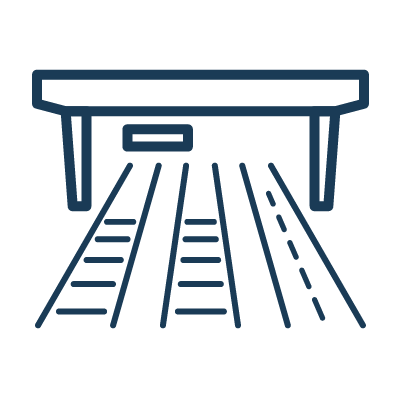
Terminal operators, marshalling yards (first/last mile)
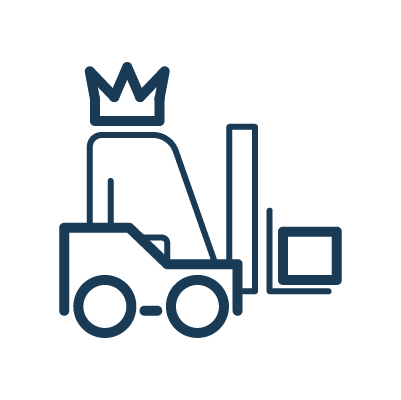
Shipper

Cantons and municipalities (territorial planning)
INFORMATIVE
Commitment
We are supporters of the railway siding charter. The latest version of the charter will be published at the end of January.
Political
Railway sidings
Over 850 railway sidings are used in Switzerland. Unfortunately, there is a steady decline. To counteract this, the Federal Office of Transport (FOT) provides financial aid for the construction and renewal of railway sidings. In the following links you will find guidelines and regulations concerning sidings. At RailCom you will find information on non-discriminatory network access and the network usage conditions.
- Login siding directory from BAV
- Documents, regulations from the BAV (in german, french or italian)
- To the RailCom website
Spatial planning canton and commune
The VAP provides advice to cantons and municipalities. In the following examples, the cantons integrate freight transport logistics into spatial planning:
Archive

RailCom: Promoting a competitive railway system through innovation and transparency
Patrizia Danioth is a lawyer and notary and has been President of RailCom since 2013. In this interview, she gives us an overview of RailCom’s tasks, her position on the draft legislation for freight transport and talks about the future mobility infrastructure (MODI).
That’s what it’s all about:
- RailCom ensures non-discriminatory access to the railway network
- Promotes competition in the railway system
- Supports the strengthening of the EWLV
- Access to data for greater transparency and innovation
Mrs Danioth, what is RailCom responsible for?
RailCom ensures non-discriminatory access to the railway network, CT transhipment facilities and local delivery services. In this way, RailCom contributes to a competitive Swiss railway system. RailCom also expresses its views on issues that fall within its remit as part of the legislative process. This is the case with the current draft legislation on the future of Swiss rail freight transport.
What is RailCom’s position on the current draft legislation on the future of Swiss rail freight transport? Where do you see a need for action?
RailCom supports the strengthening of single wagonload transport and the further development of multimodal transport chains. However, RailCom identifies two critical aspects in particular in the draft law on Swiss freight transport, which need to be regulated in a coherent manner with existing legislation.
What are the critical aspects? What requirements would the draft legislation have to fulfil in order to be consistent with existing legislation?
Firstly, the state subsidisation of single wagonload transport must be competition-neutral. Block train transport, which is self-sufficient, must not be cross-subsidised by the subsidised single wagonload transport. Such a distortion of competition must be prevented with the present draft law on Swiss freight transport. Be it that the provider of single wagonload transport makes a financial, legal and organisational separation between the self-economic services of block train transport and single wagonload transport. Be it that stricter requirements as well as control and sanction options effectively prevent cross-subsidisation.
The aim of the proposal is to promote an innovative offering in single wagonload transport with a high level of customer orientation. Fair framework conditions are essential for this.
Secondly, existing legislation in the railway sector and in freight transport stipulates that if a company receives financial support from the state, it must make its services or access to its facilities available to third parties on a non-discriminatory basis. Although the draft law on Swiss freight transport provides for non-discriminatory access to single wagonload transport services in principle, it does not yet sufficiently specify this requirement. This is shown by a comparison with the legislation on the promotion of CT transhipment facilities or the law on underground freight transport: For example, the legislator regulates the rights and obligations of the operators of CT transhipment facilities in more detail than those of the network provider in single wagonload transport.
With MODIG, a bill is being drafted to ensure that the infrastructure and services of public and private transport can be optimally operated and utilised thanks to a better flow of information. The mobility infrastructure (MODI) should one day enable the various players to be networked and data to be provided and exchanged. What does RailCom think of MODI?
Data and data exchange are an indispensable prerequisite for mobility. Alongside rail and other transport facilities, data therefore forms a system-relevant infrastructure. Data is also a prerequisite for the utilisation of infrastructure: Data that is relevant for access to the rail network, CT transhipment facilities and last-mile services, for example, must be available to all users in a transparent and user-friendly manner and be easy to find. The data must be made publicly accessible in a non-discriminatory manner, i.e. complete, correct and free of contradictions. MODI can make a significant contribution to this.
MODI and open data in general also strengthen non-discrimination through increased transparency, equal treatment and the possibility of third-party participation. Open data thus promotes economic efficiency and customer-orientation by strengthening competition. The potential for innovation in the sector is increased. The privately operated website www.puenktlichkeit.ch, for example, allows insightful comparisons to be made on the punctuality of trains.
Mrs Danioth, thank you very much for this interview!
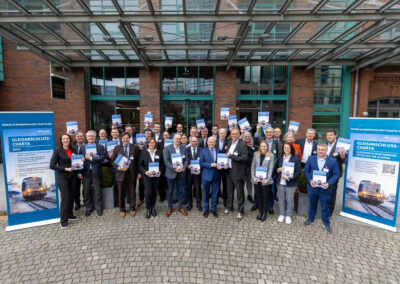
Rail Connections Charter 2024: a broad-based initiative for a strong rail system
On 31 January 2024, the rail sector presents the siding charter to the representative of the German government in Berlin. Signed by 56 associations across Europe, the initiative sets out concrete measures for the successful transformation of rail freight transport as part of multimodal logistics based on sidings and customer-oriented access points.
That’s what it’s all about:
- A better future for sidings and access points
- Key areas of action and concrete implementation proposals
- Utilising the strengths of the railway across national borders
A better future for sidings and access points
On 31 January 2024, the new siding charter was presented to Michael Theurer, Parliamentary State Secretary and Federal Government Commissioner for Rail Transport. This is a milestone for the future of rail freight transport in Europe and Switzerland. The co-signatories want to improve the future prospects of rail sidings and multimodal access points. We at the VAP have been involved in various working groups and have contributed our knowledge and experience. Regular dialogue of this kind is key to improving developments in the future of Swiss rail freight transport and its international connections.
Key areas of action and concrete proposals for implementation
The charter sets out five overarching goals and specifies measures that are crucial to the attractiveness and survival of rail freight transport.
- Support people who make and implement decisions. In the context of this claim, it is important to communicate the system knowledge and the possibilities of rail freight transport for multimodal logistics chains to political decision-makers.
- Equip the economy with access points and upstream infrastructure as required. In addition to securing and possibly expanding suitable locations, this also includes targeted financial support.
- Improve framework conditions for railway sidings and loading points. This primarily means reducing regulatory requirements and bureaucracy.
- Offer multimodal transport solutions via sidings and loading points. Rail freight transport is part of a multimodal logistics chain. Freight customers therefore need incentives for overall offers with a high proportion of rail transport from various providers.
- Use modern and innovative technologies. The transformation and use of new achievements such as digital automatic coupling (DAC) or data platforms is absolutely essential for rail freight transport (see blog post «Ready for the next level of digitalisation»).
Utilising the strengths of the railway across borders
The Siding Charter 2024 is supported by 56 associations, organisations and initiatives from the fields of industry, trade, logistics, construction, agriculture, timber, recycling and local authorities – including the VAP. These stakeholders will continue to participate in future work to refine and implement the solutions, and not just in Germany. After all, rail freight transport should be able to develop its strengths across national borders. Interested parties from Switzerland are welcome to contact Jürgen Maier.
Statements:
Joachim Berends, Vice President of the VDV Association of German Transport Companies:
«Since the first edition in 2019, many of the charter’s proposals have already been implemented or are in the process of being implemented. But we are still a long way from reaching our goal, and further topics have been added. 56 signatory organisations are proposing measures to strengthen Germany as a business location with more and modern sidings – and to protect the climate.»
Dr Helena Melnikov, Managing Director of the German Association of Materials Management, Purchasing and Logistics (BME):
«We support the central demands of the charter to the best of our ability. The most important thing now is to reduce bureaucracy and simplify regulations. At the same time, the promotion of sidings must be improved, more commercial areas must be connected to the railways and new transport concepts must be created that incorporate sidings.»
Dr Frank Furrer, Secretary General of the VAP Association of the Shipping Industry:
«The cantons are already developing logistics and freight transport concepts for favourably located sites with good road and rail connections.The dispatch on the Freight Transport Act aims to lead rail freight transport out of archaic production conditions and make it fit to play a central role in multimodal logistics chains.The charter and dispatch therefore complement each other ideally for import and export transport.»
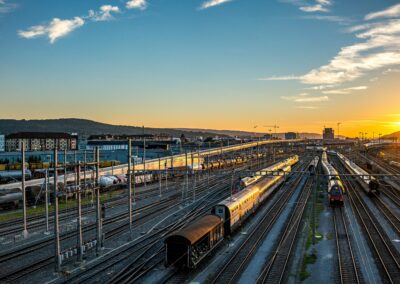
Focus RailCom: presentation of key people
This is the issue:
- The Commission guarantees non-discriminatory access
- Who is behind the Commission? We would like to introduce you.
RailCom guarantees non-discriminatory access to Switzerland’s rail network, combined transport transhipment facilities and local freight services. The Commission is actively committed to an open and fair market access policy in order to promote healthy competitiveness and increase the efficiency of the rail sector.
In this blog post, we introduce the staff who are committed to RailCom.
Chairmanship:
- Chair: Patrizia Danioth Halter, lic. iur., attorney-at-law and notary, LL.M., Altdorf (UR)
- Vice-Chairman: Markus Kern, Prof. Dr. iur., LL.M., Professor of Public, Administrative and European Law at the University of Berne (BE)
Members of the committee:
- Cesare Brand, lawyer, Forel (FR)
- Anna Ciaranfi Zanetta, Lawyer, Department of Finance and Economy of the Canton of Ticino, Dalpe (TI)
- Barbara Furrer, Dr. iur., attorney-at-law, Head of Legal Services, DHL Express (Schweiz) AG, Hedingen (ZH)
- Manfred Haller, EMBA, independent consultant, Unterkulm (AG)
The secretariat provides professional and technical support to the committee. It follows the Commission’s instructions. It is administratively attached to the General Secretariat of the Federal Department of the Environment, Transport, Energy and Communications (DETEC). Its members are as follows:
Head:
- Christof Böhler, M.A. HSG International Relations
- Deputy: Melissa Rickli, lic. phil. hist.
Staff members:
- Ana Dettwiler, Lawyer, Legal Affairs
- Ursula Erb, Doctor of Economics, Market Monitoring
- Andreas Oppliger, lic. phil. nat, Market Monitoring
- Katrin Suter-Burri, Ph. ETH, Communication, Agenda and Research

Titus Büter from Swiss Post wants fast and punctual freight trains
Titus Bütler is Head of Transport at Post CH AG and has been responsible for all letter, parcel and newspaper transport by rail and road in Switzerland since the beginning of 2022. Previously, he managed the Frauenfeld parcel center for over 20 years, where up to half a million parcels are processed daily. He also designed the network expansion with the new parcel centers in Cadenazzo, Vétroz, Untervaz and Ostermundigen. In an interview with VAP, he explains the importance of rail transport for Swiss Post.
Here’s what it’s all about:
- How high is the share of rail in the modal split at Swiss Post?
- Customer demand for fast delivery is increasing
- “Pain points”, or optimization potential in rail freight transport
- Swiss Post is the European leader in the transport of goods by rail
VAP: Mr. Bütler, Swiss Post’s yellow trains are striking. More and more, yellow trucks can also be seen on the roads. Is this impression deceptive?
Titus Bütler: Our trucks with the yellow containers do attract attention. Our customers are increasingly demanding fast delivery: picked up in the evening and delivered the next morning. So we’re not talking about 24-hour delivery, but about 15 to 20 hours – and that to any place in Switzerland, whether urban or rural. So we are under time pressure throughout the supply chain. This makes it difficult to bundle parcel volumes to fill entire trains. We choose to go by rail wherever it makes ecological and economic sense. Around 50 percent of all letters and parcels already make at least part of their journey by train. A short train with one or two wagons makes no sense – not even ecologically.
What is stopping Swiss Post from using rail for the transports we see on the road?
We are working with our transport partner SBB-Cargo to shift more parcel shipments back onto rail. We need fast and regular express routes. The average speed of some postal trains is below 50km/h, even though we have fast rolling stock and run light trains. That is too slow.
How do you see the future of postal logistics, will there be more by rail or by road?
We clearly want to bring more volume onto the railways, especially on the west-east axis.
Swiss Post’s newly planned centers do not have rail connections. Why?
In recent years, we have put several small parcel centers into operation. Terminals require land, make the project more expensive and delay realization. Planning and construction were carried out under time pressure: in some cases, less than 2 years passed between the decision on the location and the opening. Where possible, however, we use terminals in the vicinity, e.g. in the case of Cadenazzo, the SBB terminal. Parcels to and from southern Switzerland travel by rail.
Parcels and letters are not considered so-called “rail-affine” goods. What competencies do you have as Swiss Post, as a shipper, to ensure that these goods are nevertheless transported by rail?
We are the only postal service in Europe that transports such goods by rail on a large scale. The prerequisite is that the inclusion of rail is already taken into account in the design and – even more important – that there is an infrastructure that allows fast freight trains with high punctuality at all. We have experts in our team who are very familiar with rail freight transport.
Swiss Post has the same owner as SBB Cargo. Is this more of an opportunity/simplification for you? How would you describe this relationship?
The transports were put out to public tender. The ownership does not play a role. We have a clear customer-supplier relationship, just like other transport companies. Our requirements in terms of punctuality and reliability are very high and we are very satisfied with the services provided by SBB Cargo.
If the fairy godmother were to grant you one logistical wish, what would it be?
I would wish for regular and fast train paths on the west-east axis.
How would you describe the VAP?
We are one of the largest siding owners and one of the largest rail shippers in Switzerland. The VAP represents their legitimate interests at various levels and networks the players among themselves.
What strengths do you attribute to the VAP?
The VAP is indispensable for the political work of all players in rail freight transport.
To whom would you recommend cooperation with the VAP?
Every company that owns tracks or wagons or is active in rail freight transport – whether as a customer or as an RU – benefits from the VAP.
What has not been said yet:
Our mail trains are important to us. We use them to connect Switzerland quickly, reliably and ecologically. That is why it is important to us that the image of slow and often spray-painted freight trains does not rub off on our mail trains.
Mr. Bütler, thank you for the interview and the interesting insights.
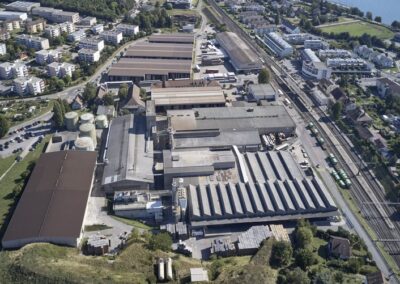
«An excellent neutral negotiation partner»
The Vetropack Group is a listed and family-run glass packaging manufacturer in Switzerland. We at the VAP accompanied Vetropack during the negotiations on the new siding contract and the renewal of the sidings. We talk about this cooperation and the future of rail freight transport with Philippe Clerc, Head of the Vetropack site in St-Prex.
Mr Clerc, how did the collaboration between Vetropack and VAP come about?
Philippe Clerc: First we carried out an operational analysis to prove that Vetropack had been allocated too many tracks. VAP’s expertise and negotiating skills meant that we were able to make significant savings on the siding contract and renewal.
How important are the sidings for Vetropack?
The conditions of our market are becoming increasingly difficult. If we want to remain a leader here, we have to become more agile and faster. The VAP has helped us to improve the overall management of the railway infrastructure and the production processes. This helps us to increase our competitiveness and Switzerland’s security of supply. Vetropack’s strategy is based on the development of a green factory. Here we want to make the best possible use of sustainable energy in order to significantly reduce our CO2 emissions. Rail as a mode of transport is an essential part of this strategy. Our customers appreciate the fact that we are increasingly using rail. They approve of our method of transport in the area of glass recycling.
How did the VAP support you?
The VAP actively supported us in negotiating the siding dossier with SBB Infrastructure. Thanks to its excellent legal expertise, we were able to negotiate a good contract. This enables us to continue our environmental strategy by expanding rail transport.
How did you experience the cooperation with the VAP?
The VAP represents the interests of the owners of railway sidings. Thanks to its neutrality, it can effectively support its members. It has helped us to find an optimal solution so that we can continue to use our railway tracks.
Did you have any previous contact with the VAP?
We have been members of the VAP for several years and appreciate the work of the association.
What strengths do you see in the VAP?
The association is innovative in the development of new systems or infrastructures and adheres to the guidelines of the Federal Office of Transport FOT. It is committed on behalf of the owners of systems or wagons both to the expansion of the rail network and to the improvement of transport services by the freight railways. Thanks to the extensive legal expertise of the VAP, we were able to conclude an ideal follow-up agreement for our company and the continuation of our activities on the railways. As a result, we were able to optimise rail production at our site in St-Prex and minimise operating costs. I consider the VAP to be an excellent neutral negotiating partner.
What did you appreciate most during the cooperation?
The professional approach, the competences in the railway and legal field, the knowledge in the operational field as well as the relations with politics. All this contributed to a quick and optimal solution.
What else would you like to see from the VAP?
That it should be even more committed to the development of single wagonload traffic. The delivery windows, for example, are far too narrow. The capacities for freight transport on the rail network must be increased overall.
Who would you recommend to work with the VAP?
Any company that wants to build a rail facility in its operations centre. The VAP can be useful to all companies that have a railway infrastructure but do not have the necessary knowledge to negotiate and conclude contracts in this area.
Where do you see the most urgent need for action in rail transport?
As mentioned, we need an opening of the time windows for freight wagons. The number of goods trains must increase, for example through a clockface timetable. Rail freight transport should eventually come up to the level of passenger transport. In addition, we must ensure our connection to Europe. We must not be isolated from Europe.
What are the advantages of rail freight transport?
It is considered the safest mode of transport, which is why it is preferred throughout Europe. Rail is the best alternative to road, just look at the CO2 footprint. Large quantities can be transported by rail with just one train. And even at night or in the early morning.
What do you wish for the future of rail freight transport in Switzerland?
That the rail freight network can be maintained and expanded. Only in this way can we increase the environmental compatibility of freight transport. It would also be desirable to push ahead with innovations. This will enable us to remain competitive in the future, as innovations can reduce costs for operation, shunting, administrative tasks and other things. Overall, it is important to improve the operation of single wagons and thus the competitiveness of the rail network. We have to prepare rail freight for the future so that we are not overrun by trucks one day.
Good to know: The VAP advises and accompaniesVAP members benefit from our in-depth expertise in all areas of freight transport at national and international level as well as from our networking with business and politics. In the years 2020 to 2022, we supported our members with the following services:
|
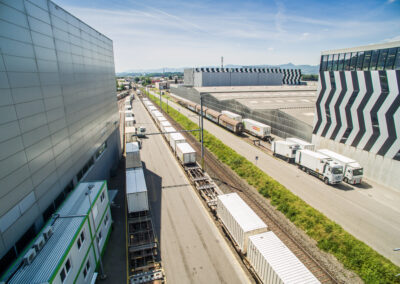
Outsourcing the last mile and making it non-discriminatory
That’s the point:
- Why free access to the last mile is important
- Preventing discrimination instead of fighting it
- Redistributing and refocusing forces
Importance of the last mile
Serving the last mile (local delivery) is solely in the hands of a local or regional provider. Accordingly, non-discriminatory access to the last mile determines whether an offer is competitive in the main run or not. Whoever provides services in local delivery by rail is obliged to do so in a non-discriminatory manner. This is the intention of Article 6a of the Freight Transport Ordinance (see box).
Article 6a of the Freight Transport Ordinance (GüTV)All companies that provide (partial) services over the last mile must provide their local delivery services by rail in a non-discriminatory manner. This means that they must also provide their services for third parties, provided that capacities are available for this. In addition to the freight railways, this obligation concerns siding operators with their own rolling stock and personnel, specialised personnel leasing companies and shunting service providers. Shunting and other services related to short-distance delivery, such as technical inspections or brake tests, are considered last-mile services.> Further information from RailCom in German or French |
Preventing discrimination instead of fighting it
Art. 6a GüTV relies on regulations, market controls and legal remedies. However, it would make more sense to prevent discrimination by having a single provider ensure the service of the first/last mile. Ideally, this would be the infrastructure manager who does not otherwise provide transport services. In a market environment, rail freight access to sidings, local and central marshalling yards, free loading facilities or terminals is regulated in a non-discriminatory manner. The allocation of train paths and the operation of system-relevant infrastructures are the responsibility of independent institutions. System leadership by a single large operator – as is currently the case with SBB Cargo – does not exist. The boundaries between single wagonloads and block trains are abolished, and the last mile is managed by an infrastructure manager.Reorganisation of forces
In order to achieve the ideal state described above, roles have to be redistributed and forces have to be bundled. Such a reorganisation will only succeed if the following framework conditions are created:- SBB Cargo retains its role as network provider for the time being. It is responsible for the planning of network traffic and ensures the efficient bundling of traffic with individual wagons or wagon groups. In providing the services, it limits itself to the main transport runs between formation and marshalling yards, insofar as it does not procure these from third parties.
- The entire railway infrastructure such as the network, combined transport terminals and local marshalling yards are freely accessible to freight railways.
- The service of the first/last mile is a non-discriminatory service of the infrastructure managers for all freight railways. The system-relevant resources of SBB Cargo, such as traction units, shunting teams, shunting tracks/stations, shunting services or internal operational changes, are available to these.
- This creates competition with equal players and transparent costs. You can read more about this in our publication «From integrated to market-based railways» (in german).
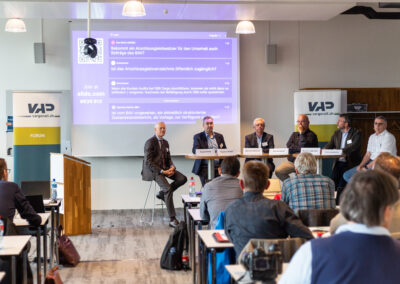
Forum Sidings 2022 – Review
For the first time since 2018, the Siding Forum was held again on 15 November 2022. The speakers agreed: sidings can very well be operated successfully, as long as the operators invest money and time in planning, expertise and safety.
That’s what it’s all about:
- Sidings can be operated successfully. But it requires money and planning.
- Pragmatic safety checks make it possible to compare theory and practice.
- The exchange of experience within the industry and the expert support provided by the VAP are welcomed.
Critical view
In the first part of the forum we brought up the new roles in wagonload traffic. In his welcome address, VAP Secretary General Frank Furrer took a critical look at the current consultation process. He called on those present to contribute their ideas for successful rail freight transport in industry discussions. What is needed is a reorganisation of the roles of the players on the last mile, in distribution and in production. There is also a need for a more flexible use of resources such as wagons and locomotives through new business models. A study by the VAP in 2013 already showed at that time that competition-oriented cooperation leads to a system with more efficient service provision and more traffic.
Operation
Thomas Keller, Head of Logistics at Perlen Papier AG, spoke about the successful operation of the sidings. He described the recruitment of qualified employees as a major challenge for his sidings in Gisikon/Root. The necessary training costs a lot of money and requires far-sighted planning. Other factors are the complex operating regulations and the maintenance of the company’s own locomotives. Thomas Keller shared with the guests his experiences with Article 6a of the Freight Transport Ordinance and RailCom. Thanks to good advice from the VAP, it was possible to find an adequate special solution for access to the Perlen Papier AG siding, according to which no use by third parties is possible because the facilities are not suitable for this and expansion projects exist.
Safety checks
Ueli Remund, member of the siding staff at Planzer Transport AG, used the organisation and processes as an example to show how important clean documentation and safety checks are, e.g. to ensure safety and traceability. Such documentation is essential for the successful operation of railway sidings. Planzer needed to refine the internal controls of the sidings. Ueli Remund recommended hiring the VAP expert service provider to do this if the expertise is lacking in-house.
Maintenance
Heinrich Maurer, Head of Real Estate at mobilog AG, highlighted maintenance and its reliable planning with the support of the VAP, using the example of the company’s own siding. This is an important part of the transport logistics; after all, 70% of the inbound volume is delivered by rail. mobilog AG decided to load onto the train after the Gotthard tunnel was closed for a long time due to an accident. Heinrich Maurer considers this decision to have been the right one in the long term.
Duty of supervision
In the second part, Henrik Lippmann, lead auditor at the FOT’s Safety Supervision Section, reported on the experience gained from the safety supervision of adjoining companies. This supervisory duty brings added value to the companies. Many railway operators are not familiar with the railway, which is why the audits are often tantamount to advice. The online siding directory is an important tool. Siding owners can use this to file documents digitally, set up automatic notifications and for other useful functions. Henrik Lippmann also provided information about the upcoming changes in the 2024 amendment cycle to the Driving Service Regulations (FDV), which will lead to simplifications in the shunting area of the sidings.
Dialogue
In the panel discussion, the speakers discussed the topic “Safety in reality and theory – are there differences?”. Interested shippers, freight railways and service providers took part in the forum. They were able to take away valuable insights and practical tips from the presentations and the discussion. And, of course, networking was not neglected at the subsequent stand-up lunch.
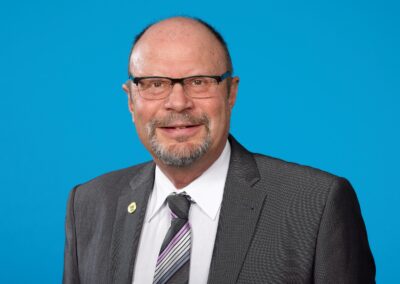
In the interview: Matthias Grieder
VAP: Mr Grieder, what is your collaboration with the VAP like?
Matthias Grieder: We have regular dealings with General Secretary Frank Furrer. For example, he is the representative of the Ristet-Bergermoos track cooperative and has represented it in a joint development project for this industrial area on the municipal territory of Urdorf and Birmensdorf. He has also been involved in the drafting of the partial revision 2022 of the cantonal structure plan and is always involved in various logistics-related working groups. Frank Furrer brings both the perspective of the siding owners and the overall national view of multimodal logistics. He supports us with his enormous expertise and his extensive professional-political network. I find this cooperation very pleasant and fruitful.
Where do you see the most urgent need for action for rail freight transport?
In my opinion, the most important and at the same time most difficult task is to secure rail/road transhipment areas in urban areas. Here’s an example: where the “Europaallee” now stands behind Zurich’s main railway station, there used to be a postal distribution centre with ten tracks. With the redevelopment of the area, the entire supply infrastructure as well as large logistics areas that would have been important for ensuring the future supply and disposal of the city of Zurich were lost. Freight traffic and logistics facilities are moving out of the city and are increasingly being displaced to the Mittelland. These distribution centres are often not accessible by rail. As a result, more and more trucks and delivery vans are driving from there into the city, which puts additional strain on the congestion belt around the agglomerations.
The Spatial Planning Act also requires denser building in existing settlement areas. The additional traffic caused by population growth must be handled on existing transport areas. This means that these areas must be used more efficiently and areas must also be made available for supply and disposal. The more densely one builds, the more important it becomes to design attractive outdoor spaces. A ground-level supply system impairs this attractiveness. That is why it is important to check early on in the site planning process how above-ground areas can be relieved of delivery traffic and how delivery and waste disposal can be integrated into underground facilities. Good examples of such solutions are the new Circle at Zurich Airport or the Sihlcity shopping centre.
What is the situation with the sidings?
The problem is similar here. Sidings and switches are constantly being dismantled and their service reduced. This creates a downward spiral: fewer tracks, less rail transport volume, less rail loading, less single wagon loads, less demand-oriented rail services. On the other hand, this means more road transport, more traffic jams, more noise and more CO2. In the long term, this trend must be reversed.
How could the problem be solved?
We need solutions that bundle shipments even more and bring them efficiently through the congestion belt into the centres. Approaches to bypass or drive under the congestion. We also need service concepts for fast and direct service. And we need better financial incentives that strengthen the railways and do not allow single-wagon load traffic to dwindle. With its excellent infrastructures, the railway has a great opportunity here and can fulfil this task. But new innovative modes of transport, such as the digital overall logistics system Cargo Sous Terrain (CST), can also transport large quantities without placing an additional burden on road transport. All these systems can be linked via common digital platforms and made even more efficient.
How do such solutions come about?
Only if all parties completely rethink and cooperate in partnership. Unfortunately, today every company calculates for itself in isolation and is focused on short-term profit maximisation. The railways concentrate on the profitable block train traffic and neglect the costly single wagon traffic, which can contribute significantly to a shift from road to rail. Road hauliers focus their fleets on the most cost-effective production, usually with smaller vehicles, and optimise their tours internally. This is despite the fact that vehicle kilometres could be reduced through cooperation with competitors. Real estate strategies or concepts of both private landowners and the public sector do not allow for innovative solutions for a vertical division of use and thus prevent solutions for a space-saving and efficient supply and disposal in urban areas.
A networked way of thinking is missing in the economy, in politics, in administrations and also in the training of transport and spatial planners.
Has the pandemic not triggered a rethink?
Yes, Covid-19 has made people more aware of the relevance of a functioning supply system. The topic of freight transport and logistics has become much more important. Experts had been dealing with these complex interrelationships long before the pandemic, and politicians are also becoming more and more aware of the issue. We try to draw attention to these interrelationships again and again. Sometimes even with success, as for example with the Sihlcity shopping centre on the site of the former “Zürcher Papierfabrik an der Sihl” in Zurich-Wiedikon. Here, the planners have integrated the supply and disposal systems into the basement right next to the garage entrance. From there, it is finely distributed vertically upwards. This is exactly the direction we have to think in when planning sites: away from pieces of cake and towards layers of cake. In this way, a combined use of urban or peri-urban areas becomes possible.
How can transshipment areas and locations be secured in the long term?
Logistics areas in urban areas are rare, and there will hardly be any new ones. The public sector is trying to secure existing transshipment areas through entries in the structure plan. However, these planning specifications are not binding on the property owner. The only way to secure land, to which private landowners are also obligated, would be through a corresponding zoning ordinance or through an increased purchase of the corresponding land by the cantons and cities. These strive for longer-term objectives with a longer planning horizon, such as securing the supply and disposal of goods, and are not so profit-driven.
How could the economy be more involved in the preparation of spatial planning concepts?
The inclusion of economic actors in the development of sites is central to the future of freight transport. After all, they have to implement site development. In the Canton of Zurich we already involve the business representatives in the analysis phase within the framework of working groups, although as a canton we have no legal mandate for freight transport planning, but only act in an advisory and supportive capacity. In the canton of Zurich we have laid down guidelines for the development of freight transport in a cantonal freight transport and logistics concept. We are certainly playing a pioneering role here. But other cantons such as Aargau, Bern, Vaud or Basel-City are also acting in a progressive manner. We learn from each other through regular exchanges via the SBB Cargo platform and the freight transport group of the Swiss Association of Cities.
In your opinion, what does optimal utilisation of the infrastructure by passenger and freight traffic look like?
I think that we should continue to pursue and optimise the current approach with separate train paths for passenger and freight traffic in the network utilisation concept. I am rather sceptical about a flexible allocation of train paths, because freight traffic could literally get lost in the process. The need for infrastructure expansion has been recognised, as the expansion step 2040 shows.
Where do you see the biggest tasks in infrastructure?
In the further development of the infrastructure, the special needs of freight transport must be taken into account. The Zurich suburban station node is already completely overloaded today and rail traffic in the Zurich area will continue to increase. Therefore, bypasses must be created, such as the freight tunnel from the Limmattal marshalling yard into the Furttal and on towards eastern Switzerland. Rail freight transports coming from the Mittelland and wanting to continue in the direction of Knonauer Amt also have to make a U‑turn in the Zurich preliminary station with a hairpin bend. This places an additional burden on the infrastructure several times over. Shortcuts” are needed here to bypass hot spots. For example, the Limmattal marshalling yard could be connected directly to Zug and Lucerne via Knonauer Amt. Such projects are of course enormously expensive and can only be implemented in the long term. Nevertheless, the planning course must already be set today.
What do you wish for the future of Swiss rail freight transport?
I very much hope that the opportunities offered by rail for shifting traffic from road to rail will also be exploited in national transport. This requires a trend reversal with faster and more efficient service concepts, especially in single wagonload traffic. Innovative service concepts that are demand-oriented and efficient are needed here.
What are these?
Digitalisation offers opportunities that are currently not being exploited in rail freight transport. For example, freight railways know via digital codes exactly when, where and for how long their goods are parked. They should make this knowledge available to their customers in the form of shipment tracking throughout the entire transport chain from sender to recipient. This would significantly increase their attractiveness.
Digitalisation and automation are also crucial for the competitiveness of rail freight. Of course, short distances of a few kilometres, as we often encounter in Switzerland, are not very suitable for rail. But if you automate certain processes – for example with the Digital Automatic Coupling (DAK) or through automated reloading of swap bodies – efficiency could be significantly increased. Private wagon owners would have to implement such solutions in order to keep their fleets more profitable and to shorten running times.
Why does freight rail have such a hard time being competitive?
That is a difficult question. One would have to analyse very carefully why rail freight is so uncompetitive and which measures are effective for more attractive offers or lower costs. Such a study could be a task of the VAP.
Speaking of the VAP: What could we do better?
I know Frank Furrer and I know what the VAP logo looks like. But I hardly perceive the VAP as an overall organisation. Here I see potential for optimisation. Moreover, I am always invited to interesting and meaningful events. But for us administrative staff, the administrative effort for the approval of an event with costs is so great that we often refrain from participating. That is actually a pity.
To whom would you recommend cooperation with the VAP?
All cantons and municipalities in Switzerland. For the administrations, the VAP is a competence partner and informant that supports the transfer of know-how; especially thanks to its national overall view. For siding owners, the VAP is an important representative of their interests, committed to the expansion of railway services, the preservation of facilities and the safeguarding of areas.
Mr Grieder, thank you very much for the interview.
| Personal details Matthias Grieder is a trained spatial and transport planner and has been project manager for freight transport and logistics at the Office for Mobility of the Canton of Zurich for four years. |
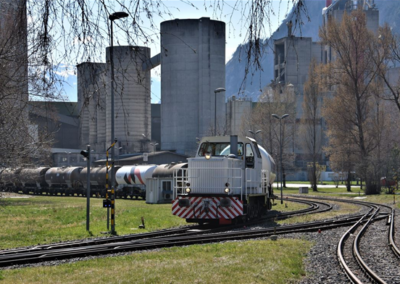
IG WLV: Set goals, develop measures
On 9 June 2021, the annual cantonal conference of the Wagonload Transport Interest Group (IG WLV) took place – unfortunately again as a video conference. In addition to the founding partners of IG WLV (VAP, Association of Public Transport (VöV/UTP), SBB Cargo), a large number of representatives from individual cantons took part.
To start with, VöV and SBB Cargo presented the current situation – especially in the context of the Covid 19 crisis – and pointed out the challenges ahead. The VAP then presented the three main objectives on behalf of IG WLV, from which three clusters of action can be derived. IG WLV is currently working intensively on the concretisation and concrete implementation of these goals.
Technology/Automation cluster
IG WLV is pushing for the rapid introduction of nationwide and non-discriminatory automation and digitalisation in Switzerland. This is done in close coordination and cooperation with Europe. It advocates the implementation of the motion Dittli 20.3221 vis-à-vis the industry, politics and administration (cf. blog post «Progress for automation in rail freight transport»).
Production/efficiency cluster
The IG WLV defines key performance indicators and draws up a concept that depicts estimates of demand flows in wagonload traffic for the coming years. It is also considering how additional volumes could be generated that combine planning security, dynamism and cooperation.
Policy cluster
IG WLV is working on a concept for CO2 reduction (see blogpost «Motion CO2-free rail freight»). It will represent this concept vis-à-vis the federal government, industry players and cantons and promote its implementation.
Findings from 2020
After defining the target areas, the participants reflected on the findings from last year’s cantonal conference. Attention was given to the following focal points:
- Data: Various challenges to obtain the right data – quantitative and qualitative – for future concepts and planning.
- Locations and legal bases: Tasks and obligations of the Confederation, cantons and municipalities and optimal use of existing and future logistics areas.
- Free loading: Consideration of all free loading in an overall concept that includes the respective financing needs and tools.
- Expansion steps/STEP: Bringing together the concerns of all actors from politics and business, cross-cantonal coordination and use of the same basic tools.
Best Practice
In an interesting contribution, the cantons of Vaud and Zurich presented their challenges and approaches to solutions for optimising and improving logistics opportunities. These could be used as best practices or interesting starting points in the future.
Further round table discussions
All the information and impulses were discussed in greater depth at two round tables with the following focal points:
- Round table 1: Solution approaches to the challenges of the findings from 2020
- Round table 2: Best practice of the cantons of Zurich and Vaud; possible blueprint for further steps towards optimised, integrated freight transport logistics
Details on the concrete results of the panel discussions and on possible measures can be found in the next blog post.